Reopening schools safely is now Canada’s most urgent task
The high-wire act of opening schools up without triggering another shutdown is a make-or-break situation. Just ask parents who quit work to care for their kids.

Tomislav Mesić with his kids Anka, 8, Kata, 6, and Mate, 22 months (Photograph by Carmen Cheung)
Share
Tomislav Mesić is no stranger to early mornings. His day usually begins at 6:30 a.m. with his six-year-old daughter, Kata, who has cerebral palsy and needs daily physiotherapy. Then it’s off to breakfast with his wife, Manda, and his other two children, eight-year-old Anka and 22-month-old Mate, before he drops off the older pair of kids at school and starts his workday.
But when schools closed in Burlington, Ont., in mid-March due to the pandemic, Mesić’s life turned upside down. A building contractor for 10 years, he typically has one or two medium-sized projects on the go when his children are in class. With his wife working full-time as a business analyst at Ontario Health, Mesić quickly realized his days needed to be spent in the house with his children to help them with homeschooling. He tried shifting his work hours to the evening.
From March to May, Mesić would begin work at about 4 p.m., finishing off at 1 a.m. before heading home to shower and cram in five hours of sleep before waking up to the same routine. “It became obvious that I can’t take on work, because I can’t provide customers the timeliness that is needed to complete it,” Mesić says ruefully. He hasn’t accepted a job since, which has not only caused financial pinch—“Our household requires two paycheques, now we’re going with one”—but something akin to depression.“Sitting at home is not my nature,” he says. “There’s a feeling of uselessness.”
Mesić isn’t the only one struggling. Mothers like Emily Howell of Toronto have found themselves unable to work at greater rates than men since schools shut down. Howell, a chiropractor for more than 16 years, had to shut down her practice after March break due to the pandemic. But reopening proved a tricky ordeal while her two children were learning from home. Aged nine and 11, the kids are both in French immersion, and Howell is the only other person in the household who speaks the language and could help them with homework. “I became the homeschooling parent by default,” she says.
As the pandemic restrictions loosened and other chiropractors opened up for business, Howell sat idle, waiting for her daughters’ summer break, struggling with the push-and-pull fear of neglecting her children and neglecting her business—a conundrum she says many self-employed mothers have had to face. “I had to pick my kids, and that’s hard because I love my patients too,” Howell says.
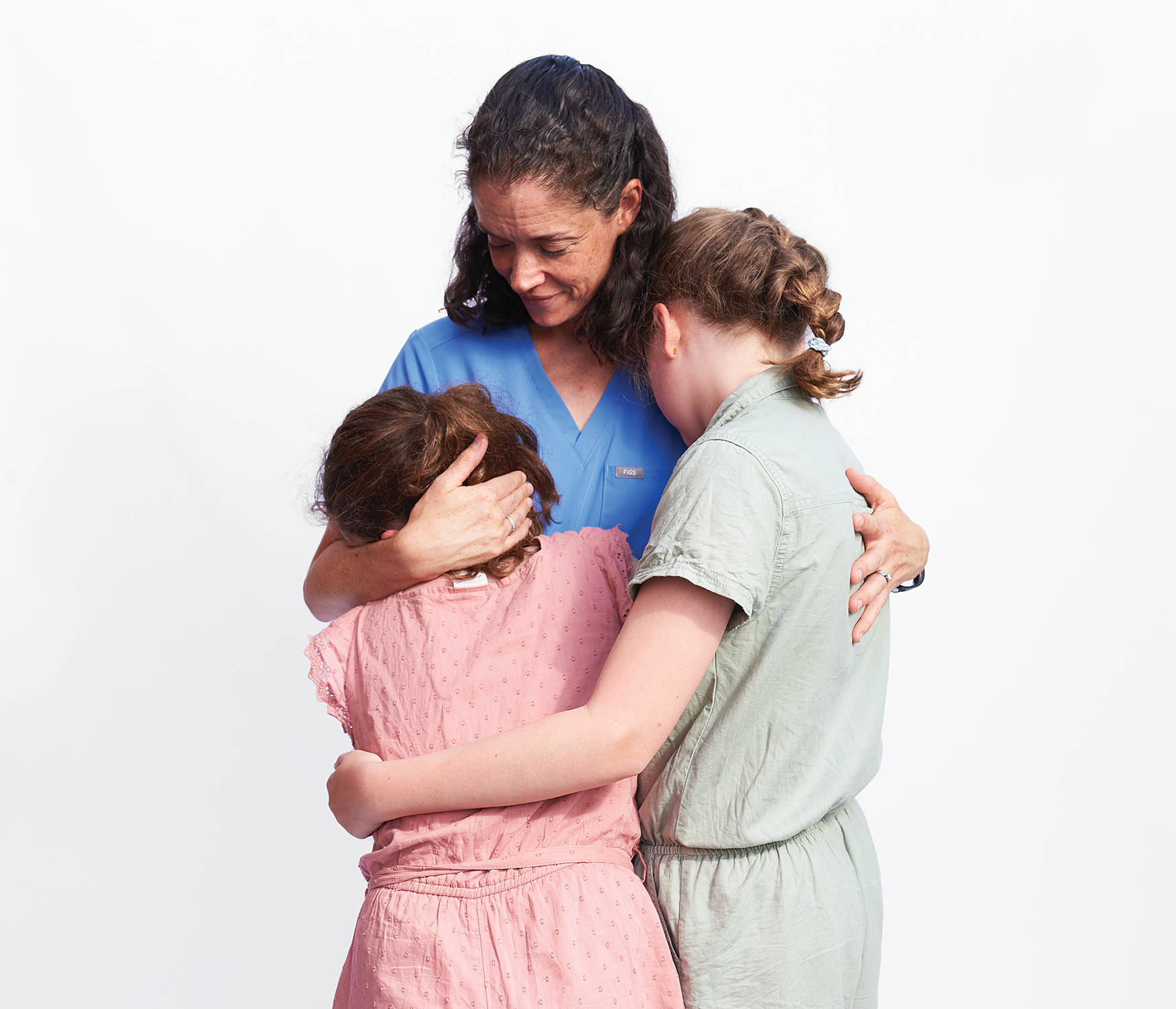
Emily Howell, Toronto
She’s since been able to return part-time as her children are off for summer break, partly by working on Sundays for the first time in 16 years, and by hiring a tutor. But another school shutdown may mean having to move away from her responsibilities as a chiropractor again. “It’s hard because you’re pulled in multiple directions and everybody needs you,” she says. “It’s a real feminist issue.”
The pandemic caused a disruption in education—and by extension, the lives of Canadian families—unlike anything in modern history. Almost overnight, children across the country were barred from returning to school as the threat of the coronavirus grew. Learning (such as it was) transitioned to the web, forcing kids of all ages to adjust to a schedule of online assignments and intermittent Zoom sessions. It was a burdensome, abrupt transition for all: teachers who had never delivered online classes before; parents suddenly forced to play the instructor and caretaker while juggling careers; children who missed their friends and their normal routines.
The shutdown, while difficult, proved justified. The pandemic posed a significant and unpredictable threat to the population, and social distancing is nearly impossible to achieve in crowded classrooms filled with children, some of whom may themselves be immunocompromised. Recent outbreaks in schools outside of Canada, namely in Israel, the United States and Australia, have reinforced the gravity of the threat, even as science suggests children are less likely to contract the virus and suffer symptoms. The spectre of renewed spread will loom until a vaccine is available.
But on the education front, there have already been consequences: teachers warn of a gap in learning for students who scrambled to finish bare-bones versions of their curriculums online, while many young people report a decline in mental well-being as their main means of in-person socializing ceased at a moment’s notice.
For adults, meanwhile, the shutdown has demonstrated the multi-tentacled reach of schooling within their working lives and the economy—and the cascade of crises that ensues when it is shut down. Parents can’t work if their children are at home without access to affordable child care, and the economy will not bounce back if parents can’t work. For generations, schools have been part of the country’s institutional wallpaper—front of mind from time to time, but otherwise taken for granted. Now, suddenly, nothing in the country is more important.
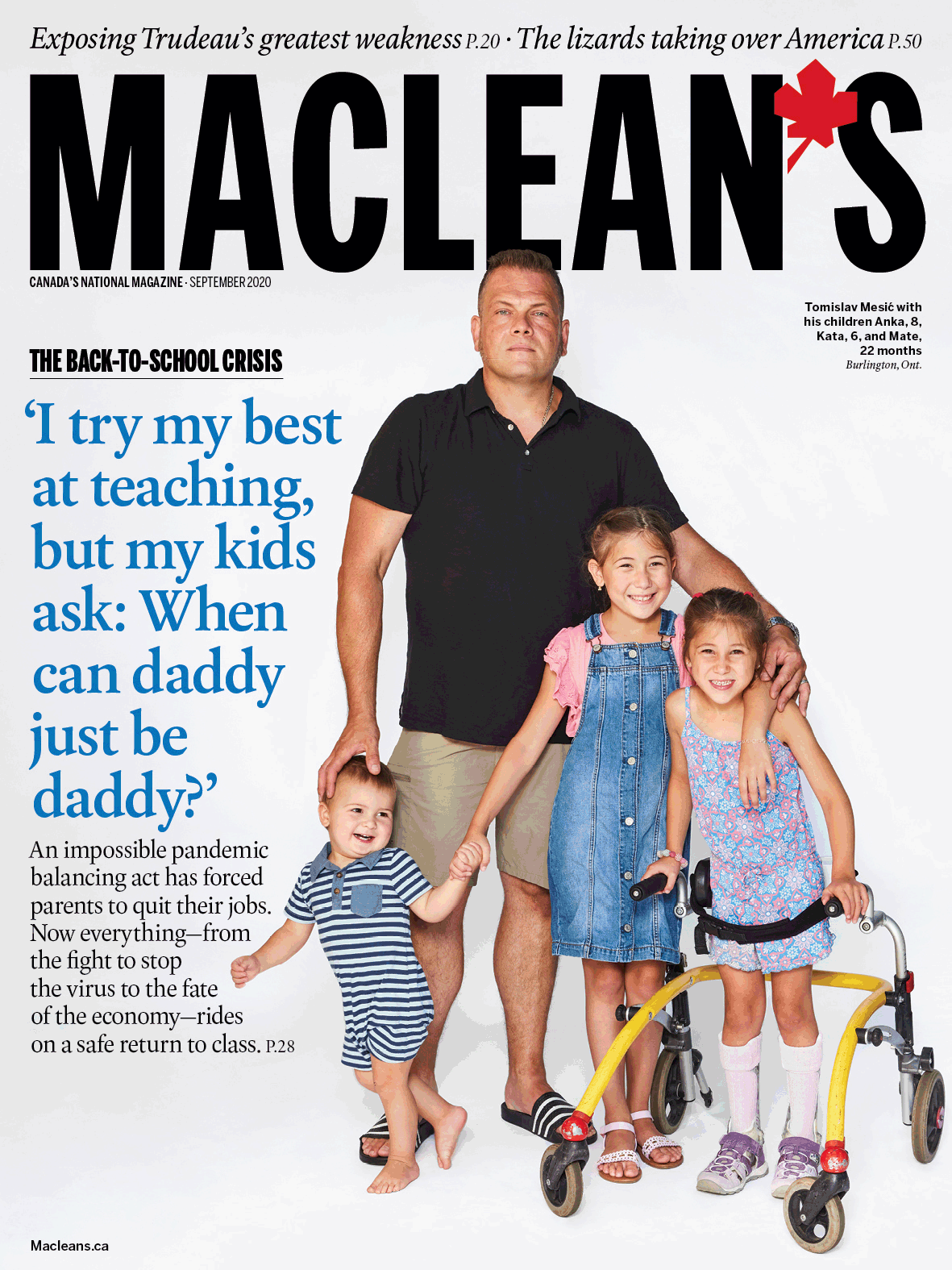
Over the four shutdown months leading to summer, adults had to walk a daily tightrope between teaching their own kids and fulfilling what for many remained full-time work duties. The line was strained for most, and for some it has outright snapped. Maclean’s spoke with over a dozen families across Canada who fear that quitting their jobs may be their only option if a safe, practical solution to the schooling question isn’t reached by September. Women, in particular, have been forced to abandon established careers as child care duties fell on their shoulders.
Small wonder, then, that provinces scrambling to finalize back-to-school plans do so amid fury from parents, who have assailed governments that are seen as more driven to get bars and restaurants open than to devise safe and realistic means to get kids back in class. Models for part-time classes, or full-time online learning, have been floated, only to be greeted with boos. Perhaps wisely, many boards were waiting to make final decisions just a few weeks before classes were set to start. Whatever plan they choose, one inescapable fact remains: another shutdown is possible as long as COVID-19 is in the air, with consequences almost too awful to contemplate.
***
In most provinces, March break marked the arrival of the coronavirus pandemic. For parents, it was also the beginning of a months-long storm on a sea of overflowing responsibilities. Ottawa mother Ariel Troster remembers it vividly. “It snowballed really quickly,” she says. “It went from ‘maybe people shouldn’t travel’ to ‘oh my gosh, they’re shutting the school down.’ ” She and her wife both quickly transitioned to working from home full-time and began setting up a daily routine for their eight-year-old daughter, Daphne, who was to continue schooling from home. It didn’t take long, however, for things to fall apart.
“The whole concept of virtual education for an eight-year-old was kind of silly,” Troster says. Daphne is not yet a fluent reader on her own and could not complete Google Classroom assignments by herself. Her days at home were spent rotating between her mothers—one would be sitting at the kitchen table working, while the other toiled at a desk in the basement—asking them to help her navigate the assignments on her second-hand Chromebook. Neither parent could break out enough time to help. “We were completely unable to pay attention to our daughter as much as she needed,” Troster says.
Some days, all three would be on separate Zoom calls at once, straining the internet connection. Others, Troster would set up a movie for Daphne while she worked beside the girl on the couch, trading places with her wife as soon as the other could step away from work. “There were long stretches of time where the screen was a babysitter,” Troster reflects. And Daphne, despite her young age, could sense the strain of this routine.
Their daughter began to feel downcast and discouraged. Soon it became hard to get her to get on calls with her teacher or to even leave the house for a short bike ride. Once, Daphne sent a Facebook message to her mother from a separate room, saying, “I’m sad and I don’t know why.” A few weeks later, she sent another calling her mother a “boring worky-pants.” The label became a family joke, but beneath the lighthearted jibing, Troster says, lay concern for her daughter’s mental health. She was missing her classmates. She needed social interaction with kids her age.
[contextly_sidebar id=”YKXknjHi7S5VoNXgJkB6gMDxiPKvZZhm”]
The exhaustion and confusion is not limited to younger students. Nicole Thomas’s two children are set to embark on the pivotal school years of Grade 9 and Grade 12 this fall in their Edmonton schools, and each has voiced anxiety over the coming months. Seventeen-year-old Malachi wants to be a social worker like his mother. But he worries about his grades, which suffered in the aftermath of the shutdown, and whether they will derail his plans of getting into university. This, coupled with the struggle to get out of bed every morning and the cancellation of his extracurricular football program, has clouded his vision of what the future may hold.
As the school year wound down, Malachi waited anxiously for his report card, “just hoping to get a 50 so he can get to Grade 12 English,” Thomas recalls. “From a parents’ perspective, I think, ‘Are they even ready?’ Because the majority of students are barely getting by.”
Edmonton public school teacher Jonathan Hemphill, who teaches a class of 35, says at least half of his Grade 6 students did not do much work after transitioning to online learning, despite the twice-a-week Zoom sessions and instructional videos he posted online to help them. A more concerning trend, he adds, was the near-complete lack of engagement from students who were already falling behind before the pandemic. “It varied from family to family,” he says. “Those that I had to track down and keep an eye out for a little more didn’t do well in this type of environment.”
For teachers themselves, the transition was in many cases a plunge into the unknown, Hemphill says, and he spent many hours in the first few weeks setting up Google Classroom for his colleagues, offering tips on how to provide course material. The varying skill sets of teachers resulted in a patchwork of approaches across the country: some stuck to the basics of math and language; others tried to incorporate other subjects as well; many struggled to meaningfully engage with their students at all.
For younger children, especially, the experience could be overwhelming. “Kids don’t necessarily transition well to learning from the parents,” says Alexandre Da Costa, an assistant professor of education at the University of Alberta and father of two young children. “It’s a different structure. We’re in the house; you’re going from eating breakfast to sitting down to try to teach the kids how to learn.”
Hemphill says the shutdown left a glaring gap in learning that will need to be addressed in September—one that worries many teachers and parents, especially those of children with learning disabilities, who will have the greatest difficulty getting back to grade standard. “We’re going to go through a period where we’re going to have to catch students up,” he says. “I don’t know how long that period is going to be.”
Da Costa warns that socioeconomic disparity may also amplify the gap. Struggling to make sure their children kept up their educations while meeting employment demands, many low-income working families gave up on homeschooling earlier, while others who had the money hired private tutors to carry their children through. “We begin to see a lot of the issues around class and how those kinds of things get in the way,” he says.

Tova Fertal, Calgary
***
Work demands. The learning gap. Child care. The health of kids. The desperate need for economic revival. Provincial governments must balance it all as they cobble together school restart plans for the fall.
Job number one, though, is the challenge of containing the virus, because failure there renders everything else moot. Early in the summer, the Ontario government said it was open to a range of models, from a return to full-time classes with enhanced public health measures to an online-only regimen that would have children learn at home for the duration of the pandemic. In mid-June, the province’s education minister, Stephen Lecce, instructed boards to prepare for a “hybrid” model, which would open social-distancing space by sending students to class part-time, on a rotating basis. The Ottawa-Carleton District School Board, for example, proposed sending half of the students to class on Mondays and Tuesdays, while the other half came on Thursdays and Fridays. Wednesdays would be reserved for the deep cleaning of schools.
The pushback was quick and severe. How, parents asked, will they obtain child care on the three days of the week their kids are not at school—at a time when employers expect them to return to the office full-time? How much teaching were they expected to do at home? Was there any research proving this awkward arrangement would help curb the pandemic?
Ontario subsequently permitted child care centres to increase their capacity from 10 to 15 children per room, operating at 90 per cent of what was allowed before the COVID-19 pandemic. But child care remains a prohibitively expensive option for many families who rely on free public schools, critics note, and that’s assuming it’s available. Burlington’s public school board estimated that a hybrid model would require child care for up to 36,000 students—spaces, it says, that simply don’t exist in the region.
More recently, parents and boards have questioned the public health wisdom of part-time models, noting that it will result in children shuffling between school and child care providers, be they family members or daycares. Halton District School Board chair Andrea Grebenc rejected the idea entirely, predicting Ontario’s initial back-to-school scenario would cause “a chaotic explosion of the virus.” By midsummer, after weeks of declining infection numbers and a growing backlash against hybrid education, the province had shifted track. Premier Doug Ford said he hoped to see kids going to school full-time, a sentiment echoed by Toronto’s Catholic board. The pressure rose on July 29, when B.C. announced a full return based on a system of “learning groups”—60 students and staff for elementary schools; 120 for secondary—that will be kept mostly separate from each other. The next day, Lecce announced that all Ontario elementary students will return full-time, while high-schoolers in the GTA and Ottawa will follow the hybrid model, with classes limited to 50 per cent capacity. Mask-wearing in common spaces will be mandatory for students in Grade 4 and higher.
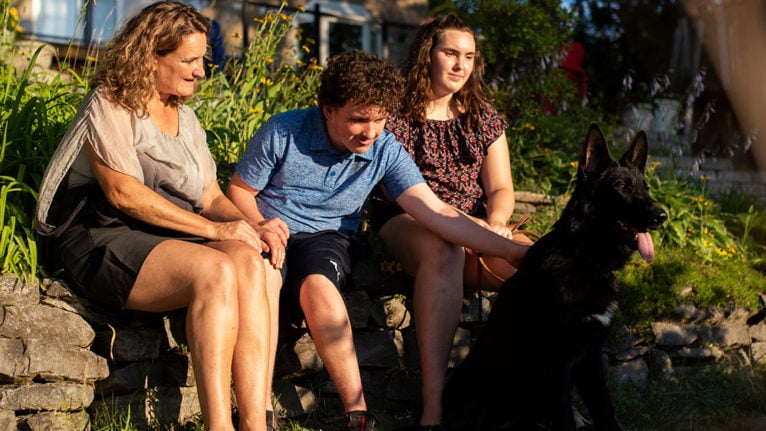
Robbyn Plumb, Ottawa
Plumb already made the difficult decision to leave work as a public servant in April for six weeks to take care of her 14-year-old son, Carson, who has a developmental disability, is non-verbal and has severe behavioural challenges. “I felt like I was on a treadmill going nowhere,” she says of the two weeks she tried to juggle working from home and caring for her son and daughter. “Not only was my family suffering, I was personally suffering,” Plumb adds.
She describes herself as career-oriented, saying it wasn’t easy to take a leave from a career she’s built for more than 30 years: “All of a sudden COVID hit, and everything came crashing down.”
***
The costs of doing this while keeping the coronavirus at bay, though, may prove crippling. The Toronto District School Board, Canada’s largest, had proposed a system it believes is the safest and most ideal: a return to everyday attendance, with classroom sizes of 15 to allow for distancing, down from the current average of 23. All vacant classroom space would be put to use. The catch? A $250-million price tag the board says it would need to make the model a reality, partly to fund the hiring of more than 2,000 extra teachers. This at a time of record public deficits. Says Carlene Jackson, the board’s interim director of education: “This model is us being a bit more creative.”
The system would focus on teaching the core subjects of math, language arts and social sciences. Some French would be possible, but there aren’t enough French-speaking instructors in the district’s current roster to teach what would eventually become a larger number of classes with fewer students. High schools would adopt a four-semester system where students take two courses at a time every 45 days.
“Everything would look different,” Jackson says. School buses, which typically hold 72 students, would allow 24, presenting the board with a potential shortage of drivers (some older or immunocompromised drivers have said they’re afraid of returning to work). Extra routes are being considered, Jackson says, as well as prioritizing children who need transportation while making arrangements with families who are able to drive their kids to school.
The plan would require a full cleaning of schools twice a day, with frequent wipe-downs of surfaces like doorknobs and railings, which would also come at a cost. The board hadn’t reached an agreement with Ontario’s Ministry of Education on who will pay for additional cleaning supplies and personal protective equipment for teachers. (The board was set to meet with ministry officials by late July to consider all back-to-school options, with a final decision to be made in August.)
In contrast to Ontario’s slower, vacillating response, neighbouring Quebec and Alberta green-lit full returns to school earlier in the summer—decisions met by sighs of relief from parents despite a bump in COVID-19 cases in both provinces. When announcing Alberta’s back-to-school plan, the province’s chief medical officer, Dr. Deena Hinshaw, bluntly stated that “there’s no risk-free approach to living with COVID-19, yet we still have to live with it.”
[contextly_sidebar id=”VVOC7ehHJ9tty6aKgJUjBe42Uer0Yvyw”]
Learning to adapt will mean zeroing in on cleaning, social distancing and limiting contact wherever possible. Many of the protocol changes seen in grocery stores and other public spaces will be implemented in Alberta’s schools: hallway traffic will follow one-way signs; there will be designated entrance and exit doors; desks will be spread two metres apart; and bathroom occupancy will be monitored.
Life in the classroom, meanwhile, will change in small yet profound ways. Children will be discouraged from using wind instruments in music class, swapping flutes and harmonicas with guitars and ukuleles. School assemblies will be cancelled for the foreseeable future. The province has allocated money to pay for touchless sinks and soap dispensers; water fountains will give way to hands-free water bottle filling stations.
Teachers and parents have taken some comfort in research cited by SickKids Hospital in Toronto indicating that children account for between five and 10 per cent of COVID-19 cases. This may be in part to early school closures, it adds, but evidence is mounting that children may be less susceptible to catching the virus and transmitting it to others.
Still, COVID-19 outbreaks have already been reported in schools around the world. In Israel, at least 1,300 students and 690 staff have become infected since schools reopened on May 17, fuelling a larger resurgence of a COVID-19 outbreak. In Australia, small outbreaks have led to closures of schools and a child care centre.
So countries around the world are trying new and creative measures to fend off the virus, or, if it comes, limit the damage. Denmark, for example, has split classes in two to promote social distancing and is teaching more lessons outdoors. In South Korea, schools have installed dividers on each desk, akin to the Plexiglas shields now seen in grocery store checkouts.
In Beijing, children donned masks for most of the school day, except during lunchtime, where they ate alone—an approach supported by a growing chorus of health experts and teachers in Canada. Amy Tan, a family doctor and University of Calgary professor, has been pushing for mandatory face coverings in schools as a way to limit community transmission. “Things must be done to mitigate risk so we have a chance of keeping these schools open,” Tan told local media. This has been met with growing support by the public: a poll conducted by the Association for Canadian Studies, a Montreal-based non-profit, suggests two-thirds of respondents believe schoolchildren should be required to wear masks while they’re on the bus or in schools.
Whatever the prevention measures, though, Hinshaw and other Alberta officials acknowledge that the threat of outbreaks will remain. In Quebec, where schools resumed before the end of June, nine children in a Trois-Rivières classroom of 11 students were infected due to community transmission, prompting the entire class to self-isolate. To avoid a similar outbreak in Alberta, parents and teachers will be responsible for screening for symptoms daily before the students enter the classroom. Should a child develop symptoms while at school, they’ll be asked to wear a mask and be isolated in a separate room as they wait to be picked up. If two or more people have symptoms in the same classroom, the school will have to notify public health of an outbreak. It’s unclear yet what will follow, as protocols depend on risk of transmission. In Toronto, Jackson says, school authorities may require everyone in the class to isolate for 14 days.
Alberta’s plan does, however, contemplate major outbreak scenarios, and the impacts would be daunting. In such an event, schools may have to revert to partial in-class learning, or full at-home online models, transporting many families back to the high-wire act of balancing work and homeschooling.
While another shutdown would unquestionably be disruptive, Hemphill, the Edmonton teacher, says teachers are at least better prepared, having learned from their mistakes last spring. He and his colleagues plan to walk students through software like Google Classroom in the first weeks of school to prepare for the event of a shutdown. Boards, too, are preparing for the worst. The Edmonton public school board, for example, has worked over the summer to create physical homework packages that can be given to students should homeschooling return.
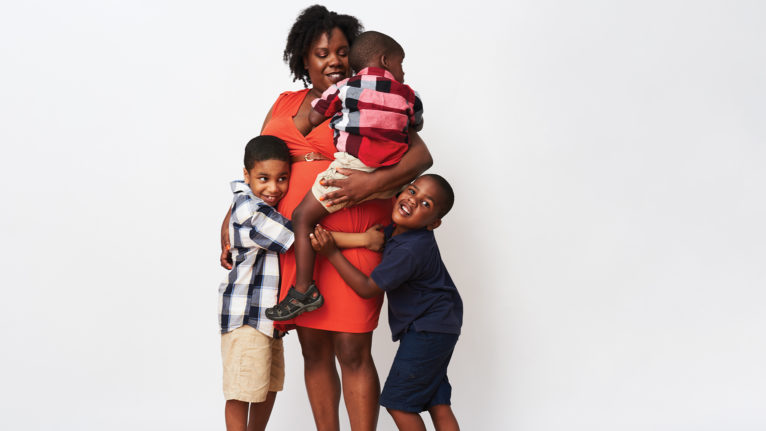
Natalie Donaldson, Toronto
A single mother of three young children in Toronto, Donaldson knew taking an unpaid leave of absence from her job as an autism support worker and relying instead on CERB was not an option. Instead, she opted for evening shifts, staying with her children during the day when schools and daycares closed, before dropping them off at her 75-year-old mother’s house at night.
Donaldson now survives on an average of three hours of sleep a day. She is kept up at night, she says, by fear of what her options will look like in September when she is forced to work day shifts again. “I hate to say it, but it boils down to money,” she says. “I’ve got to keep a roof over our heads. I’ve got to keep food in their stomachs.”
***
Amid all the preparations, however, glaring problems remain. Online learning, for starters, requires a proper internet connection and a laptop. Thomas, who works as a social worker in two Edmonton Catholic schools, says her role during the shutdown transitioned from counselling to being told “Here’s a list of kids who haven’t logged on. Try to find out why.” Her discouraging, if unsurprising, findings: families who lacked access to online learning tended to be low-income households; many were immigrants and newcomers who didn’t have the knowledge or language skills to navigate the online learning platforms.
Between her two southeast Edmonton schools alone, which have around 550 students, about 70 families couldn’t initially log on, and Hughes relied on donations of laptops. In Hemphill’s Edmonton public school of 200 students, the board loaned out 120 Chromebooks to families that needed them for online learning.
Access to online learning is a Canada-wide issue, with about 11 per cent of the country’s households lacking any internet connection. The Winnipeg School Division alone estimates that 40 per cent of its students are either without a computer or internet access at home. The city of London, Ont., has lent more than 10,000 iPads and Chromebooks to students since the pandemic began. Some school boards, like Ottawa Catholic, have gone as far as advising students without access to log on from school parking lots as a “last resort.”
Moreover, even a scenario where all kids have web access leaves open the question of who will watch over them should schools be shuttered—a question weighing heavily on parents who must work even in the event of another lockdown. Some who are deemed essential workers have gone through hoops to meet both workplace demands and their child care needs. One is Maja, a social worker from Toronto who asked that her last name be withheld because her case is not yet resolved. Her 12-year-old daughter—who has Down syndrome and autism, is immunocompromised and requires intensive one-on-one support—suddenly needed a caregiver at home when her Toronto school closed. Maja was forced to step into that role quickly.
But the conversation with her employer about a fix turned sour. “The response was, ‘You know you’re an essential worker, so you either come in or quit,’ ” Maja says. She eventually resigned and was lucky to find another job that allowed her to work remotely. But she made the shift with a heavy heart. “I loved, loved my job,” she says emotionally. “I didn’t want to leave, I didn’t ask to leave, but COVID made it very difficult for me.”
Other mothers, like Edmonton’s Greta Gerstner, face mounting pressure as their employers strive to resume normal operations. Gerstner, an insurance broker, has two immunocompromised children with learning disabilities who struggled during homeschooling, despite her best efforts to help between work phone calls.
[contextly_sidebar id=”Xk5H0HZ41ZSaELN2TjTrIAp1X7kVD00x”]
As COVID-19 cases in Edmonton dwindled near the beginning of summer break, her employer asked her to report to the office. “My boss said, ‘online learning is done, you need to come back,’ ” Gerstner recalls, adding it’s a return she’s apprehensive about. Her fears are twofold: that she might bring COVID home from work to her children; and that an outbreak at her children’s school might force a return to full-time online learning, plunging her back into her dilemma.
Economists are sounding the alarm on the long-term implications of forcing parents—especially women—into such choices without a child care safety net in place. “We are staring down the barrel of a gun that is labelled ‘economic depression,’ and we are pointing it at ourselves for inexplicable reasons,” says Armine Yalnizyan, an economist and Atkinson Fellow on the Future of Workers.
In the first month of the shutdown, the jobs of women with children under the age of six were the hardest hit, followed by women with kids aged six to 17. By the third month, men were already starting to return to the workplace due to staggered reopening measures, but women were slower to do so. Yalnizyan cites two reasons: women held many jobs that were declared non-essential, primarily in the retail and hospitality sectors; moreover, they’ve been undermined by a lack of child care—a service sector also financially affected by COVID-19.
“We run child care in this country as if it is a market service,” Yalnizyan says, noting that some spaces are offered through municipalities, others through for-profit private entities or non-profit organizations. All models depend on user fees for survival. Child care, after housing, is the second most expensive cost for a Canadian household and, as they lose income, many families can no longer afford it, causing some child care providers to close shop. “That double whammy means that you’ve got less capacity to serve people that do have jobs, so less people are going to be able to go back to work,” Yalnizyan says. “And that’s a vicious circle.”
That might explain why the hybrid model was so unpopular among Ontario parents. When it was floated, Yalnizyan says, “You could hear the sound of jaws dropping throughout the province, which is the country’s largest single labour market.” Women have done almost all of the homeschooling, she adds, for no pay. Those who can afford to may simply choose to exit the workforce.
At this stage, it is too early to see whether that has happened, but Yalnizyan warns that “we are poised to roll back women’s participation in the labour force by decades’ worth of advances,” with consequences for the rest of the country: as household incomes are destabilized, social and financial inequality will widen, and “the more inequality we’ve got, the slower the economy grows.”
In response to a likely increase in child care demands, the Liberal government announced in mid-July a $19-billion Safe Restart Agreement between provinces and territories, $625 million of which will go exclusively to funding child care. Spokespersons for Ahmed Hussen, the federal minister of families, children and social development, and Employment Minister Carla Qualtrough emphasized the government’s promise of an additional $400 million that will be spent for the 2020-21 school year to address child care needs, including those created by the pandemic.
But as the feds try to remedy the situation, they’ve also made the point that employers need to support families with the school year on the horizon. “We encourage them to work with their employees and be flexible in the coming months as restrictions ease, and to prepare for a possible second wave,” Hussen’s spokesperson, Jessica Eritou, wrote in an email.
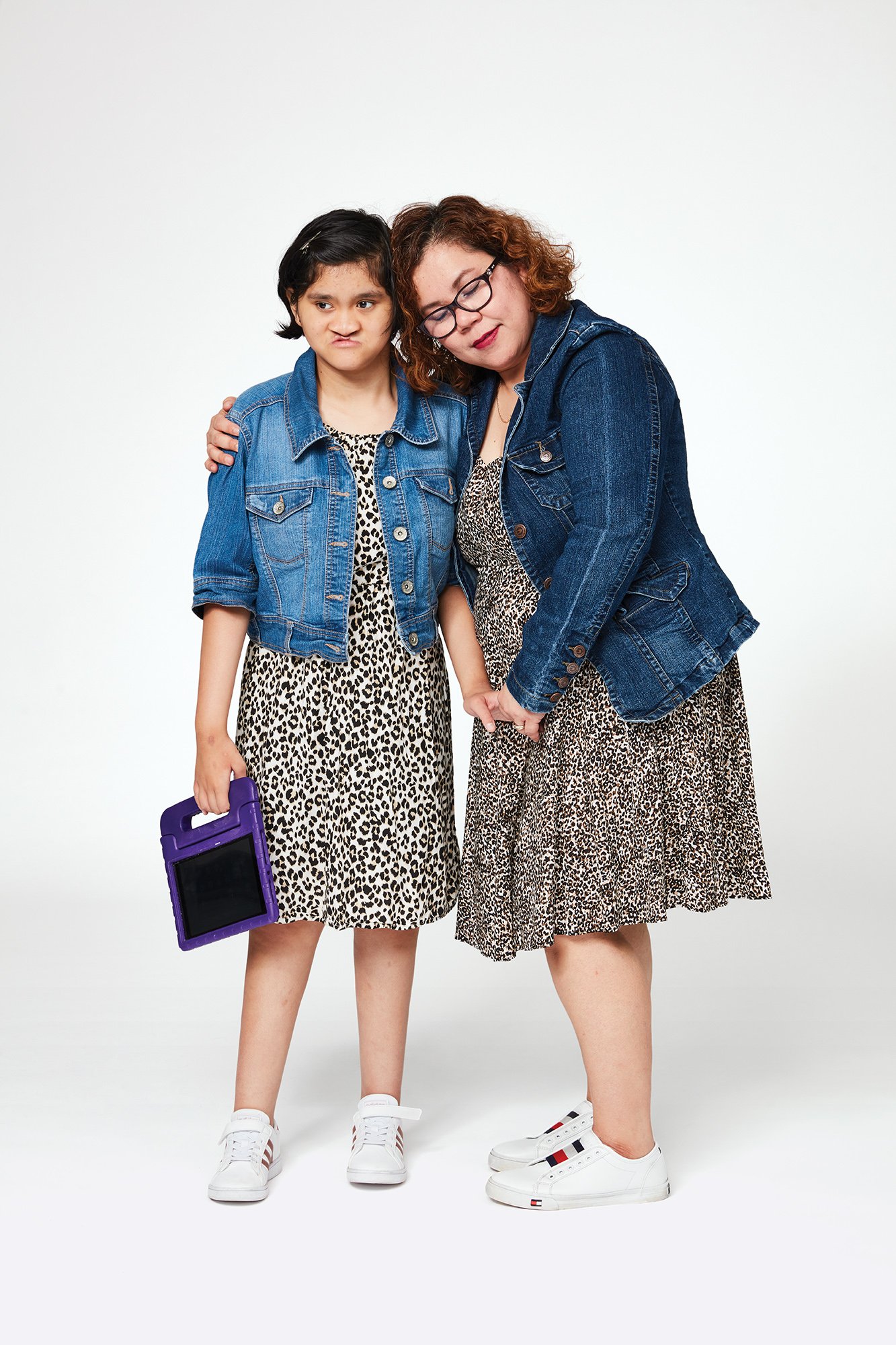
Jacqueline Murillo, Toronto
***
A flawed back-to-school model would not only carry economic consequences, experts warn, but would significantly hurt the social and mental development of children across the country—especially those with complex needs or learning disabilities. For Maja, the Toronto social worker, these concerns have become deeply personal as she watched her daughter struggle with her school’s shutdown. She’s become easily irritated and prone to aggressive outbursts. “She doesn’t have friends,” Maja says. “Her only social interaction is with her peers at school. Her social skills have regressed.”
She was also frustrated by how her daughter’s public school handled homeschooling for special-needs children. Both Maja and her daughter found the complexities of Google Classroom difficult to navigate. Worse, she says, was a decision by her daughter’s teachers to create a special classroom just for her, which left her out of general, lighthearted online conversations with her peers. “She was segregated online,” Maja says. “I’m like, ‘Are you kidding me?’ She is still here and she still has a voice and an opinion about what’s going on.”
In their back-to-school recommendations, SickKids advocated for a full return to school in the fall to safeguard the mental health and well-being of children. But the hospital’s report included guidelines for bringing back children with complex needs, saying special focus on the issue “will be extremely important as many families are already in crisis mode.”
The hospital says schools should consult with parents to draft an individualized return-to-school process, and that families of immunocompromised children who choose not to send their children to school should still be able to access adequate remote learning while having access to home care and respite supports.
Certainly the plight of children with special needs and disabilities in the fall remains a big question mark in other parts of the country. The omission of designated funding was a criticism echoed by parents in Alberta as the province unveiled its back to school plan. Gerstner says the province failed to consult with her non-profit, the Strategic Alliance for Alberta Students with Learning Challenges, when the plan was drafted.
Gerstner, whose children have asthma, and whose husband has an underlying heart condition, affirms that some parents may choose to not send their children back for fear of catching COVID-19. She hopes there will be money to support families in this situation, but she’s doubtful: “Our kids are never chosen.” Far from considering the well-being of the families she advocates for, she adds, Alberta seems “more worried about being a hub city for the NHL.”
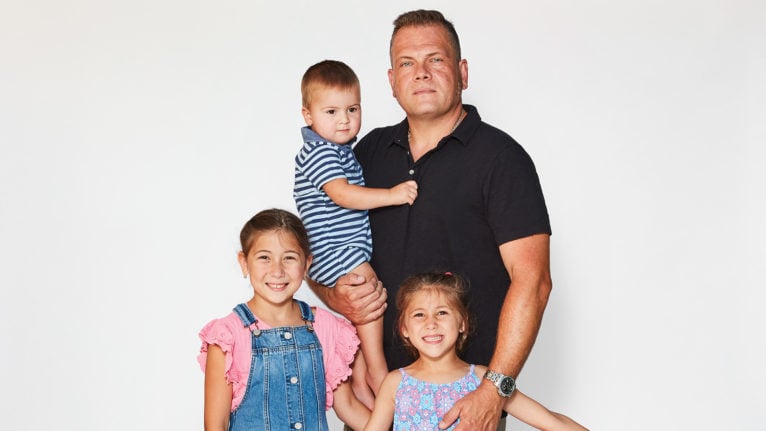
Tomislav Mesić, Burlington, Ont.
But Mesić maintains he was left with no choice but to stay home—a choice he’ll make again for his three kids if they are forced anew into homeschooling without access to adequate child care, especially when it comes to his six-year-old daughter with cerebral palsy. “I just want the best for her,” Mesić says, even if it means putting his career on the line.
***
Regardless of what protocols schools choose to follow, the hard reality is that COVID-19 will transform the way education will look and feel for months to come. While a pandemic of this scale is a once-in-a-lifetime event, the trials and tribulations of returning to school safely will have consequences that could be felt well beyond this crisis.
No surprise, then, that the country seems conflicted as the first week of September draws near. Provincial and national surveys suggest that, while more than half of Canadian families want children back in the classroom, widespread concern remains about COVID-19: six out of 10 Canadians report feeling concerned or afraid of personally contracting the virus. The fluctuating, sometimes contradictory outlooks are easy to understand given the universal dread of a repeat of the four-month shutdown that began in March, and the need to get a key decision like reopening schools right. On that there is no disagreement.
Back in Burlington, Mesić’s vision of what the new school year has in store remained unsettled well into July. He’s unable to return to full-time work unless his children are at school during the day, but has slipped into a state of resignation that is surely familiar to millions: at the mercy of the pandemic and whatever decisions governments make to address it. “I have to trust a little bit that measures will be put in place,” he says. But ultimately, he hopes his children can return safely. “There’s a number of things in the school system that I can’t provide for them at home.”
So all eyes are now on policy-makers, who are faced with a challenge that scans like a riddle: do the one thing needed most to jump-start the economy; recover millions of jobs lost since March; but do not—do not—cause a spike in COVID-19 that could lead to a second wave of infections. Because it is the one thing Canadians cannot endure. The feds alone have spent more than $212 billion so far on wage relief for workers and businesses. Yet 3.5 million families with school-age children across Canada await the last, key step to resuming something resembling their former lives. Miss the mark and the price of recovery will be incalculably higher.
—with files from Jason Markusoff
Editor’s note:
We hope you enjoyed reading this article, and that it added to your understanding of the ordinary and extraordinary ways Canadians are staring down this pandemic.
But quality journalism is not free. It’s built on the hard work and dedication of professional reporters, editors and production staff. We understand this crisis is likely taking a financial toll on you and your family, so we do not make this ask lightly. If you are able to afford it, a Maclean’s print subscription costs $24.95 a year—and in supporting us, you will help fund quality Canadian journalism in this historic moment.
Our magazine has endured for 115 years by investing in important stories and great writing. If you can, please make a contribution to our continued future and subscribe here.
Thank you.
Alison Uncles
Editor-in-Chief, Maclean’s